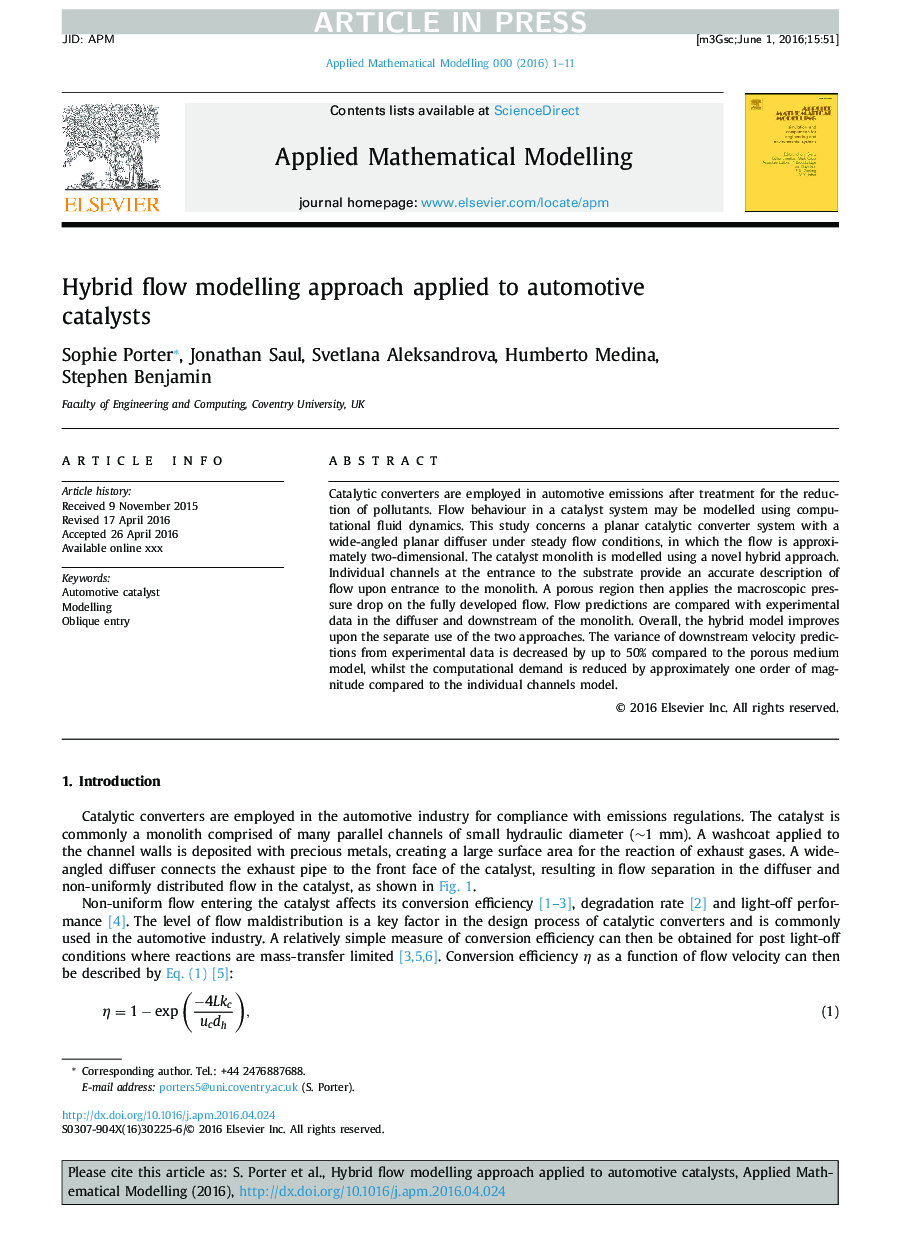| Article ID | Journal | Published Year | Pages | File Type |
|---|---|---|---|---|
| 5471266 | Applied Mathematical Modelling | 2016 | 11 Pages |
Abstract
Catalytic converters are employed in automotive emissions after treatment for the reduction of pollutants. Flow behaviour in a catalyst system may be modelled using computational fluid dynamics. This study concerns a planar catalytic converter system with a wide-angled planar diffuser under steady flow conditions, in which the flow is approximately two-dimensional. The catalyst monolith is modelled using a novel hybrid approach. Individual channels at the entrance to the substrate provide an accurate description of flow upon entrance to the monolith. A porous region then applies the macroscopic pressure drop on the fully developed flow. Flow predictions are compared with experimental data in the diffuser and downstream of the monolith. Overall, the hybrid model improves upon the separate use of the two approaches. The variance of downstream velocity predictions from experimental data is decreased by up to 50% compared to the porous medium model, whilst the computational demand is reduced by approximately one order of magnitude compared to the individual channels model.
Keywords
Related Topics
Physical Sciences and Engineering
Engineering
Computational Mechanics
Authors
Sophie Porter, Jonathan Saul, Svetlana Aleksandrova, Humberto Medina, Stephen Benjamin,
